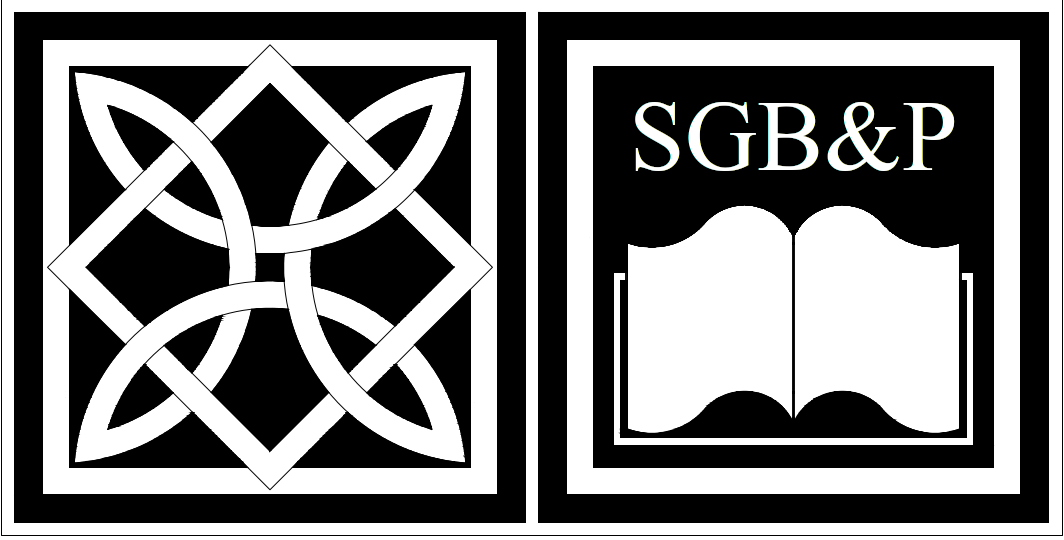Module 1 – (Fall semester) Sept. 15 - Oct. 10, 2025
The History and the Materials of Library and Archival Documents
Module 1
Workshop, 100 hours
The Structure of Books and Their Material Components
Instructor: Konstantinos Choulis
1) Safety Issues in paper and book restoration workshops
Toxic materials and conditions in the laboratory
Toxic conditions found in the field
Prevention and safety
Instruments: Gloves, masks, eye protection, ventilation
Proper disposal
2) Organization of a restoration lab
Instruments, procedures, layouts
3) Definitions and glossary
Book structure, paper terms, and procedures
4) Facsimiles: As students study the nature of paper and books they will make a series of facsimiles of different historical book structures. The purpose is to give students a material and manual familiarity with the various components.
• Signature sewing methods
Use several sewing methods on blank blocks without bindings: Chain stitch on single and double supports (leather – cords), packed, two-on, tapes
End bands
Make several types of end bands
Primary sewing (single or double core)
Secondary – decorative sewing (colored threads)
Stuck-on end bands
Bindings
Make three bindings that illustrate components and range of process: soft cover, full leather raised cord, modern case binding
5) Identification of materials
Identifying writing media: Papyrus, parchment, paper types (handmade, oriental, machine made, coated, imitation)
Identifying Inks and other writing media: Carbon, graphite, chalk, pastels, soot, iron gall, printing ink, synthetic
Identifying writing and printing methods: Handwriting, wood block, movable type, typewriting, photocopy, photolithographs, Linotype, etc.
6) Identification of library and archival materials
Libraries: Scrawls, manuscripts, medieval codexes, printed books
Archives: Letters, certificates, diplomas, contracts, posters, passports, receipts – bills, diaries, drawings, architectural projects, photographs, maps, stamps, albums, free documents
Field trips (daily visits)
Fabriano
Parchment maker
Paper Museum
Modern paper factory
Module 1
Theory class 1, 24 hours
History of Writing and Writing Media
Instructor:
1) History of writing (an overview)
Writing systems: Pictograms, Hieroglyphs, Ideograms, Cuneiform, syllabic, Abugida, Abjads, Alphabets
Evolution of writing: Mesopotamia, Egypt, China and East Asia, India, Mesoamerica, Mediterranean and Western Europe
Western Paleography / Codicology
2) History of writing media (an overview)
History of writing media (stone, bone, wood, bamboo, clay tablets, wax tablets, papyrus, palm leaves, bark, metal, parchment, paper)
Handmade paper
History of paper (Chinese paper, Amate, Korean paper, Japanese paper, Indian paper, Middle Eastern paper. Al-Andalus: Xativa; Italy: Fabriano, Amalfi, Treviso, France-Troyes, Holland; Germany: Nuremberg)
Types of handmade paper – raw material
Plants (bark amate, bast fibers, rattan, mulberry, hibiscus, blue sandal wood)
Rags (linen, cotton, hemp)
Paper molds – Far east, Islamic, and Western manufacture
Sizing materials (vegetable or animal matter)
Watermarks (chain lines/chiaroscuro/light and shade) and/or other marks in the paper sheet
Machine-made industrial papers (after 1844)
Sources of materials (wood pulp containing cellulose, hemicellulose, lignin)
Sizing (starch; animal gelatin; aluminum potassium sulfate, AKA alum; rosin)
Paper formation process
Module 1
Theory class 2, 24 hours
History of the Codex and of Printing
Instructor:
1) History of the codex
The structure of bindings End leaves, pastedowns, sewing, boards material, board attachment, spine lining, end bands, book markers, covering materials and techniques, cover and spine decoration, edges, fastenings, furniture and other metal elements – chain
Evolution of bound books Nag Hamadi, St. Guthbert, Fulda, early medieval bindings, Oriental bindings, Western bindings, late medieval, Renaissance, modern bindings, contemporary bindings, industrial bindings, artist’s books, archival bindings
2) Evolution of printing
Wood block Movable type - wood, metal
Hot metal type Linotype, Offset, Flexography
3) Evolution of image printing
Woodblock/Silography, Intaglio (Engraving, etching), Planar (Lithography, serigraphy)
4) Modern printing processes
Photographic
Xerography
Offset
Laser printing
Dot-matrix
Ink jet
5) Handwriting inks (composition, features, chemistry)
Carbon ink
Iron gall ink
Printing ink
6) Modern inks (composition, features, chemistry)
Synthetic inks
Field trip
Visit to Art printing shop

